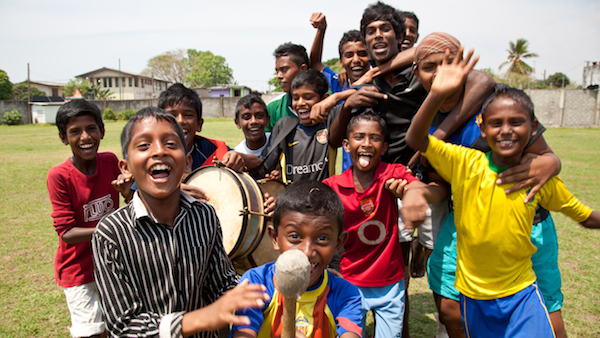By Sharni Jayawardene and Tarika Wickremeratne
Going into Slave Island at first, we were told to expect animosity and suspicion. Two women venturing into the depths of the residential settlements, taking pictures and asking questions to boot – we didn’t expect to be taken to very kindly. We found ourselves a guide from the area to introduce us so that those we talked to had a reference point of trust; but a few weeks in, we realized that this wasn’t really necessary.
We discovered something that we should have already known – people were generally happy just to have someone to talk to; someone to listen. We were a novelty, with our backpacks, camera and recording equipment, and while no one was too timid to come up to us and inquire what on earth we were up to, it was always with a kind of easy-going curiosity.
A typical conversation-starter was “Indiyavenda?” (Are you from India?). Our explanation – that we were Sri Lankan from Colombo itself, working on a project about Slave Island and its residents – was generally met with a baffled silence. The concept that we were locals ourselves but with an interest in their way of life, was tellingly alien to them.
The residents treated our project and presence with good-humoured tolerance, and we were constantly invited to sit down for a cup of something-or-the-other. Often in fact, we had to fend off such invitations of hospitality and sometimes refuse drinks quite sternly. But, they came anyway – and we had to get used to carrying out our day’s work with uncomfortably full bladders.
With the area being a high security zone, and the military headquarters often looming in the distance while we worked, we often found ourselves stuffing the camera back into its bag if ever there were too many soldiers around. But we needn’t have feared an untimely end to our research – on the occasion that they did catch a glimpse of our lens, we were routinely ignored and never once questioned or even approached.
As far as the locals were concerned however, we drew attention wherever we went. People were always pushing their children in front of our lens or holding an expectant pose, waiting for us to take advantage of it. Only very rarely did we meet anyone who was too shy to have the camera pointed their way, and even they could usually be coaxed and cajoled – if not by us, then by their friends, relatives and other onlookers – to let us take a picture.
Interestingly, many only allowed us to photograph them once they were assured that the project would not be aired on television. There seemed to be certain stigma surrounding television that didn’t seem to exist for an online medium. Though many of the residents would never have used a computer in their lives, they all knew what websites were and gave us their consent to publish the photographs online – provided we came back and showed it to them when it was finished. It was a promise we were only too happy to make, and look forward to keeping.
Only twice, in several months of walking around Slave Island, were we met with any suspicion. When covering the Nippon Hotel, we were asked if we were “NGO-kaarayo” (NGO people) – a word that was spoken with a thick coating of distaste. After we gave our assurance that we were freelance journalists however, we had no further problems.
Another time, when we were interviewing a resident near the Beira Lake, a small gathering of housewives started conversing amongst themselves – just loud enough for us to hear. They spoke of others who had come asking them questions and promising aid. Once the questions were answered however, no aid had come. We explained to them that the objective of our project was to simply tell their stories – for no other reason than that they were important to tell, and for others outside of Slave Island to know about. Once we took the time to explain this to them, they took us at our word, and their trust was complete.
As children shrieked with laugher and ran about outdoors, the adults would talk to us about their lives, their husbands and wives, their jobs, their beliefs; about their fears of having to leave their homes yet again; about the war, which was always spoken of as an outside influence – one that affected their businesses and the cost of living, but never their relationships with each other.
Wherever we went, the hospitality we received was heartwarming. In the confines of their small homes, these residents made us feel comfortable and at ease, plying us incessantly with food and beverages, and speaking to us with a frankness hard to come by even amongst acquaintances in larger Colombo, let alone strangers.
###
Editors note: Sharni and Tarika are two of the producers who contributed to Moving Images, a series of stunning short-form documentary and narrated photographic portraits on facets of life in post-war Sri Lanka.














